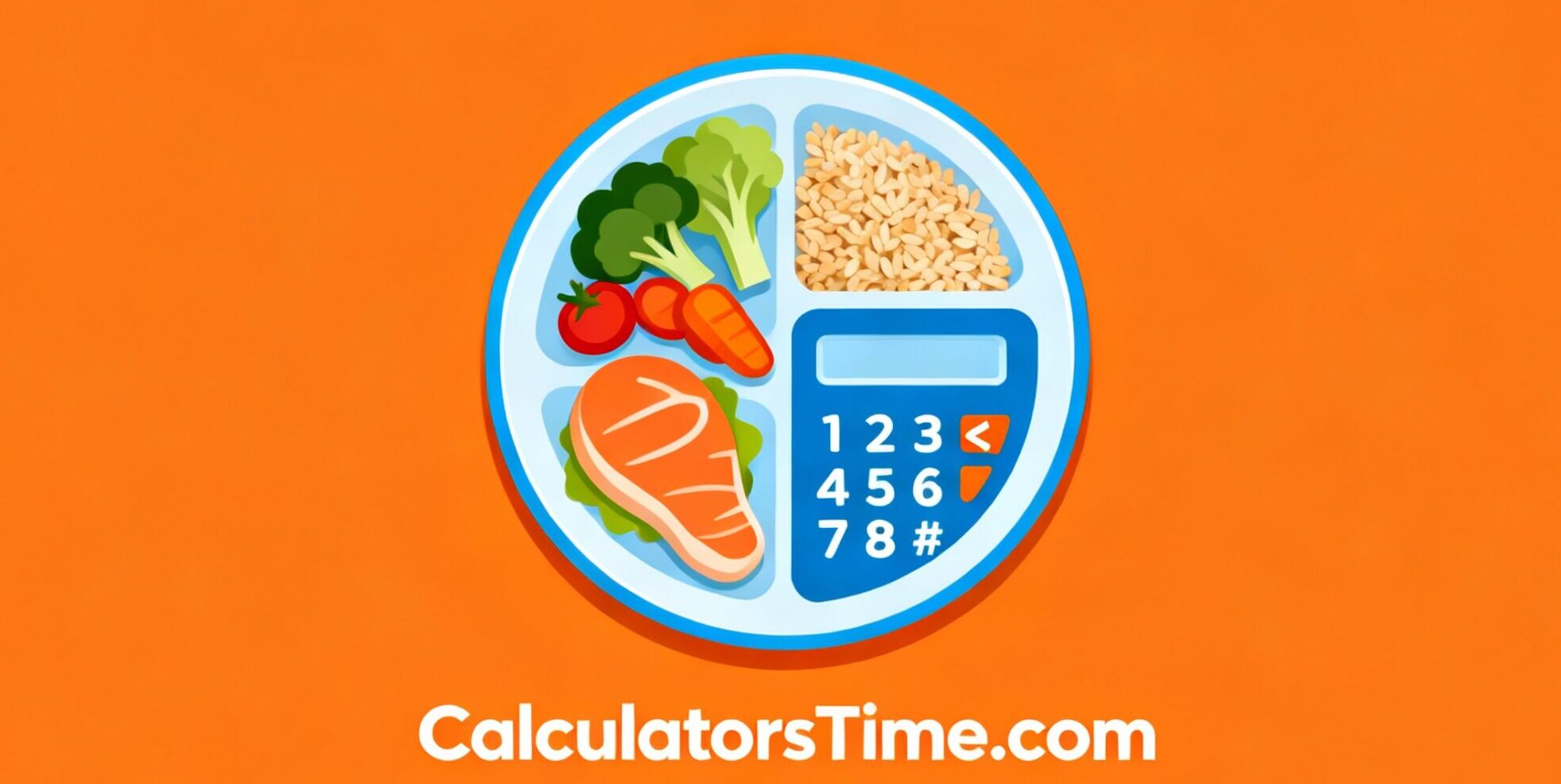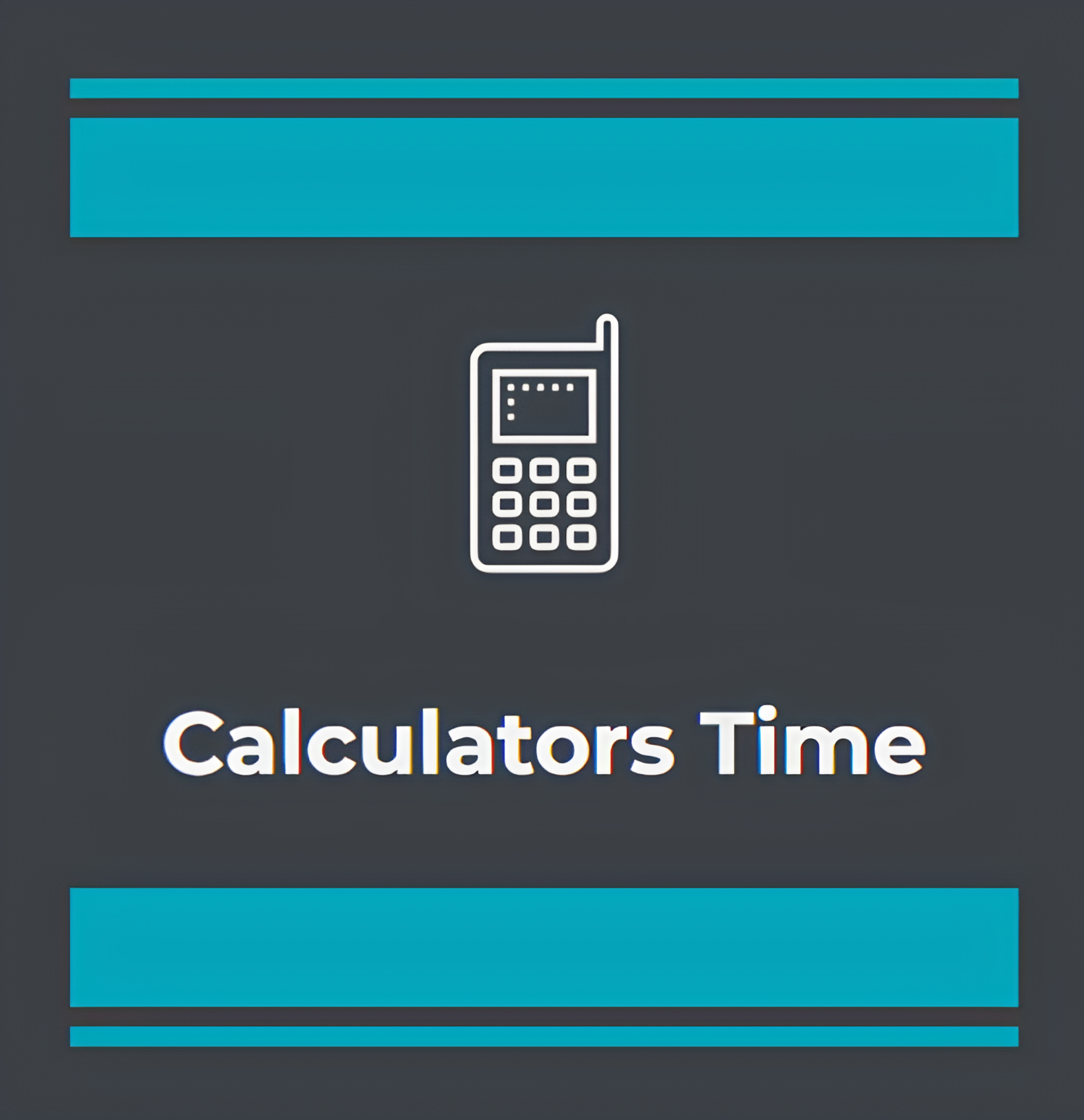Calorie Calculator – Find Your Daily Calorie Needs
- Uses Mifflin-St Jeor for accuracy (accepted by US health orgs)
- Considers age, gender, height, weight & activity
- Choose any height/weight unit—auto-converted!
- Instant results for maintenance, loss, and gain
Why Choose CalculatorsTime.com Calorie Calculator?

At CalculatorsTime.com, we've designed the most accurate, user-friendly, and comprehensive calorie calculator available online. Unlike other generic calculators, our tool goes beyond basic calculations to provide you with personalized diet plans, health status assessments, and actionable nutritional guidance—all in one place.
🎯 What Makes Our Calculator Different?
Simple, Fast & Accurate: No complicated forms, no sign-ups, no ads blocking your results. Just enter your details and get instant, science-backed calorie recommendations in seconds.
Key Features That Set Us Apart
🔬 Scientific Accuracy
Uses the Mifflin-St Jeor equation—the gold standard trusted by US nutritionists and healthcare professionals worldwide.
🌍 Multiple Units Support
Choose from centimeters, inches, feet & inches, kilograms, or pounds. Our calculator auto-converts everything for perfect accuracy.
🍽️ Complete Diet Plans
Get personalized meal plans for weight loss, weight gain, and maintenance—not just numbers. Sample meals included!
⚕️ Health Status Indicators
Color-coded health badges (Green/Orange/Red) warn you if your calorie intake is too low or dangerously high.
📱 Mobile Friendly
Works perfectly on all devices—desktop, tablet, and mobile. Calculate your calories anywhere, anytime.
🆓 100% Free Forever
No hidden fees, no subscriptions, no email required. Just pure, helpful tools for your health journey.
How Our Calculator Helps You Achieve Your Goals
For Weight Loss:
- Calculates exact calorie deficit needed (10% or 20% below maintenance)
- Provides sample meal plans with calorie breakdowns for each meal
- Offers practical tips: hydration, exercise routines, food tracking
- Safe weight loss guidance to avoid crash diets and health risks
For Weight Gain (Muscle Building):
- Determines calorie surplus for lean muscle gain or fast bulk
- High-protein meal examples with 5-6 meals per day
- Strength training recommendations and timing tips
- Focus on nutrient-dense, calorie-rich foods for healthy gains
For Maintenance (Healthy Living):
- Balanced daily calorie intake to maintain current weight
- Macro ratio guidance (40% carbs, 30% protein, 30% fat)
- Lifestyle tips: sleep, hydration, exercise frequency
- Long-term health and wellness strategies
Easy to Use in 3 Simple Steps
- Enter Your Details: Age, gender, height, weight, and activity level—takes less than 30 seconds
- Click Calculate: Instant results with maintenance, weight loss, and weight gain calorie targets
- Get Your Diet Plan: Personalized meal plans and health tips appear automatically below your results
💡 Pro Tip: Combine with Our BMI Calculator
For a complete health assessment, use our BMI Calculator alongside the Calorie Calculator. Check your Body Mass Index to understand if you're in a healthy weight range, then use our calorie tool to create your personalized nutrition plan. Both tools work together to give you a complete picture of your health!
Why CalculatorsTime.com is Your Best Choice
CalculatorsTime.com is more than just a calculator website—it's your complete health and fitness toolkit. We provide:
- ✅ Accurate, science-based calculations used by healthcare professionals
- ✅ Zero ads, zero popups—clean, fast, distraction-free experience
- ✅ No registration required—start calculating immediately
- ✅ Mobile-optimized design—works on any device, any screen size
- ✅ Completely free forever—no hidden costs or premium upgrades
- ✅ Regular updates—we keep improving based on user feedback
- ✅ Multiple health calculators—BMI, Calorie, Body Fat, Macro, and more
Trusted by Thousands Across the USA
Our calorie calculator is used daily by fitness enthusiasts, nutritionists, personal trainers, and everyday people across the United States who want accurate, reliable health information. Whether you're in New York, California, Texas, or anywhere in between, CalculatorsTime.com delivers results you can trust.
Start Your Health Journey Today
Don't waste time with complicated apps or unreliable calculators. CalculatorsTime.com gives you everything you need in one simple, powerful tool. Calculate your daily calorie needs, get personalized diet plans, and take control of your health—all for free.
🔗 Explore More Health Tools:
- BMI Calculator - Check your Body Mass Index and weight category
- Macro Calculator - Split your calories into protein, carbs, and fats
- Body Fat Calculator - Estimate your body fat percentage
- TDEE Calculator - Calculate Total Daily Energy Expenditure
Frequently Asked Questions
Is the CalculatorsTime.com Calorie Calculator accurate?
Yes! Our calculator uses the Mifflin-St Jeor equation, which is the most accurate formula recommended by the Academy of Nutrition and Dietetics and used by healthcare professionals across the United States.
Do I need to create an account to use the calculator?
No! Our calculator is 100% free and requires zero registration. Just visit the page, enter your details, and get instant results.
Can I use this calculator on my phone?
Absolutely! CalculatorsTime.com is fully mobile-optimized and works perfectly on smartphones, tablets, and desktop computers.
How is this different from other calorie calculators?
Unlike basic calculators that only give you a number, we provide personalized meal plans, health status warnings, diet tips, and multiple calorie targets (maintenance, loss, gain) all in one place—for free!
Should I also check my BMI?
Yes! We recommend using our BMI Calculator first to understand your current weight status, then use the Calorie Calculator to plan your nutrition strategy.
Ready to take control of your health? Use the calculator above and start your transformation today with CalculatorsTime.com!
📚 References & Further Reading
1 Body Mass Index, Wikipedia, The Free Encyclopedia. https://en.wikipedia.org/wiki/Body_mass_index
2 BMI Calculator, CalculatorsTime.com – Free Body Mass Index Calculator for accurate health assessment. https://calculatorstime.com/bmi-calculator/
3 Frankenfield, D. C., et al. (2005). “Comparison of Harris-Benedict and Mifflin-ST Jeor equations with indirect calorimetry in evaluating resting energy expenditure”. Journal of the American Dietetic Association, 105(5), 775-789. PubMed. https://pubmed.ncbi.nlm.nih.gov/18688113/
4 Centers for Disease Control and Prevention (CDC). “Healthy Weight, Nutrition, and Physical Activity”. https://www.cdc.gov/healthyweight/
5 National Institutes of Health (NIH). “Understanding Adult BMI and Obesity Statistics”. https://www.nhlbi.nih.gov/health/
6 Academy of Nutrition and Dietetics. “Mifflin-St Jeor Equation: The Standard for Calorie Calculation”. https://www.eatright.org
💡 Note: All calculations on CalculatorsTime.com are based on peer-reviewed scientific research and equations approved by leading health organizations including the CDC, NIH, and WHO. Our tools are designed for educational and informational purposes. Always consult with healthcare professionals for personalized medical advice.
